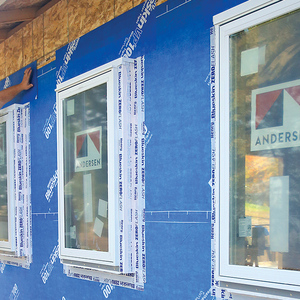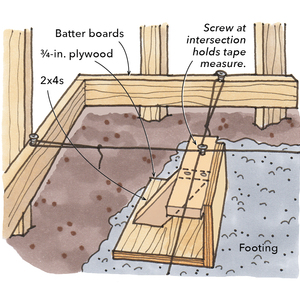We are in the final stages of building our new home, and I have taken on the challange of installing all of the interior door locks myself.
My first installation was less than satisfactory since the door rattles when closed. I assume that the strike plate needs to be moved back to correct the problem. Does anyone know of an easy way to measure the proper placement of the strike plate rather than trial and error?
Thanks for any input.



















Replies
Just a heads up, you can get a little bit of adjustment out of the strike plate by bending the little tab in the center of the strike plate. If you bend it out the door will latch tighter to the door stop. This should take care of the rattle unless the door jambs are way out of plumb!
When I can do it, I like to install the stop after I put in the lockset and latch plate. This lets me control the "slop" and minimize the rattle.
As a side note, I would be reluctant to use any more prehung doors from Home Depot. A few weeks ago, I installed six interior doors and had problems with all of them. I discovered that the hinge screws had been left slightly loose and when I tightened them, the doors didn't close right. When I tried to move the stop, I found that it had been glued and stapled. A simple "tweak" turned into a major PITA!!
If using an interior set without a full mortise around the strike's perimeter:
When you bore the hole to countersink the strike, set the strike in (no screws) and close the door. Push the door lightly to contact the stops around the perimeter with your knee, and grab hold of the curved "tab" of the strike plate. Move the strike around until it contacts the latch appropriately.
Take an exacto knife and make a light mark on the strike to register where it is in relation to the door jamb. The fine knife line is more accurate than a pencil and, if light enough, won't ever be noticed.
Open the door and screw the strike in the correct spot.
_______________________________________________________________
Installations where the perimeter of the strike is fully inset/mortised flush, you can get good at locating it by just closing the door (pushing slightly again to contact the stops) and sticking something thin next to the door until it hits the latch.
Then register how far in from the corner of the jamb that is, open the door and make a mark on the jamb the appropriate distance from the jamb corner and your in business. An old tape measure with the hook/tab cut off works well for this.
best of luck.
Ithaca, NY "10 square miles, surrounded by reality"
A SMALL amount of slop is desireable on interior doors. Otherwise, you may have a problem with the hardware binding on down the road. There are adjustable strikes on the market that solve errors in installation, however, I don't know if the finish is something you want.
Also, I don't see anything wrong with using silencers--those little clear pliable deals that the cabinet guys use to keep their doors from slamming loudly.
On new installations, some people make the mistake of measuring from the front corner of the jamb to the center of the door rabbet. You should ALWAYS measure from the stop out to the center of the door--not the door rabbet. The door rabbet is usually 1 1/2" deep for a 1 3/8" door, resulting in a 1/8" error in the alignment.
"Kinky for Gov. of Texas"
I did doors and doors for too many years, to place the latch plate, install the handle and latch first, then take a soft pencil, "some guys like lipstick" (that'll come back to haunt me) and scratch off some onto the front edge of the latch. Now turn the handle to rectract the latch, keeping it retracted close the door tightly and let the handle go, twist the hadle open, and let it snap closed a couple of times .. this will transfer the lead/lipstick from the front edge of the latch to the jamb. Open the door and hold the latch plate inverted on the jamb, alligning the latch plate tab just ahead of the mark. Trace the latch plate perimeter, and interior. Drill out the hole for the latch and mortice the jam for the latch plate .. works every time.
use a permanent marker on the latch, close the door which will mark the latch location. then use flat push pins to hold the strike plate in place and test the door
The best method I've seen is described by Gary katz in his book, "The Doorhangers Handbook". Place blue Masking tape on jam and exposed face of strike. Close door and mark front edge of door on masking tape (Jam side). Open door and place strike into position over the latch and mark the front face of the door on the strike tape. Locate strike on jam and align the two pencil marks and outline the strike on the jam. after you do one the rest will fall into place and you'll get them perfect every time. Not even a rattle just a solid "thunk" when the door closes.
My method has been:
1. Drill the big hole thru the door
2. Drill a 1/8" or thereabouts pilot hole for the bolt
3. Stick the 1/8" bit the other way around in its pilot hole, tip flush with the edge of the door.
4. Hold the door in the closed position, push the bit to make a mark on the jamb. Pull it back to open the door.
5 Drill for the bolt in the door and the jamb
6. Mortise and install hardware.
-- J.S.